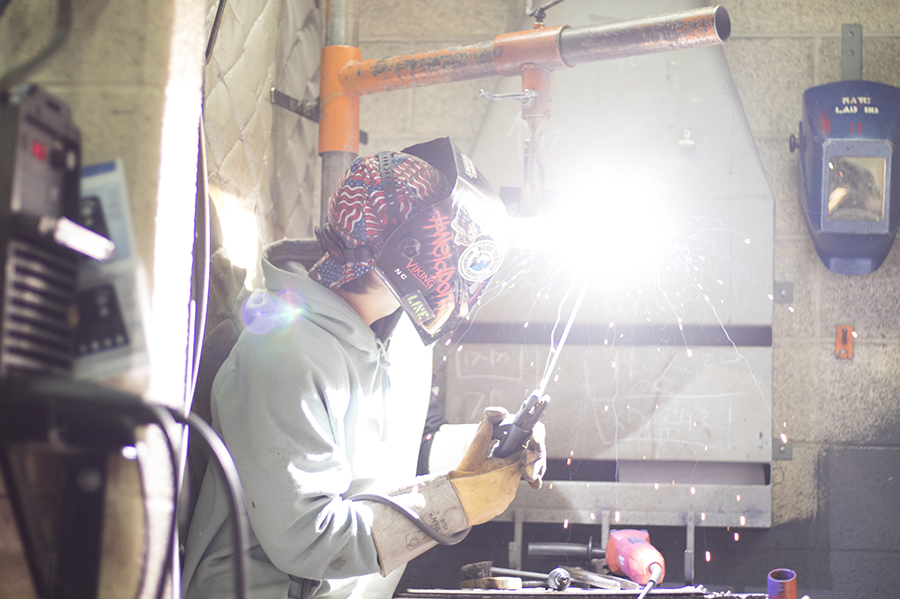Grant sparks innovation
Program looks for ways to add robotic welding to its expanding curriculum
February 13, 2018
Madison College’s welding program received their first innovation grant, and is now exploring various ways to introduce robotic welding into their curriculum.
Although robotic welding has always been around, it hasn’t always been a noticeable piece within the employers in the Madison College district. Within the last couple years, however, more companies that are hiring the Madison College graduates are either expanding what they already have for robotic welding or bringing it in, new, for the first time.
The welding program applied for this grant to get up to speed with some of the other one-year programs in Wisconsin. In the Madison area, however, “We would be the only people in south-central Wisconsin doing the robotic welding training,” explained Welding Program Director, Tony Stute.
The welding program was awarded the grant so that they could take what the program already has and make it better, easier, and more accessible without neglecting the program’s core mission, which is to train entry-level welders.
Along with some of his colleagues, Stute will soon start focusing on how to make the introduction of robotics work for the program. “And that’s one of the biggest pieces of this grant… Figuring out how it will fit into the existing program,” said Stute.
One idea that has been tossed around includes, having the robotics piece be a two-credit certificate that the students can choose to partake in.
Stute reflects on the fact that there is about a two-year wait list for the welding program, and explains that: “We want to do this without having to add another one or two years of school to a student’s work load. More companies are going to robotic welding cells and so. … We send plenty of entry level welders out into the industry, but what we don’t send out are people who are both well-trained entry level welders and have a basic background in robotics.”
With the robotic advancements hoping to come into play in the spring or fall of 2019, Stute is confident that the welding program will then send their graduates out into the workforce with enhanced robotic skills and increased employment ability.
Stute is optimistic that the robotic development will really appeal to the students who are interested in welding, but who also have a peaking interest in robotics or other things mechanical. With a graduation ratio of 33:40 students, Stute comments that: “The pressures on the program have been strong for the past seven-eight years, and they don’t show any sign of letting up.”
With students waiting to be a part of Madison College’s flourishing welding program, Stute reflects on the last couple years, and how there has been a great emphasis on upgrading the program’s power sources.
For a while, the program was using older power source technology that Stute remembers using himself when he was a student in the Madison College welding program. Now, the main lab at the Truax campus has been updated with new power sources in order to be more up-to-date with what the students may be using when they get out into the workforce. Pairing the new power sources with the robotics, the welding program will continue to thrive and send out exceptional graduates.
Stute peered around the welding lab, glanced towards the students who were working, smiled, and said, “I want students to walk in here and think ‘Wow…that was worth the wait.’”





